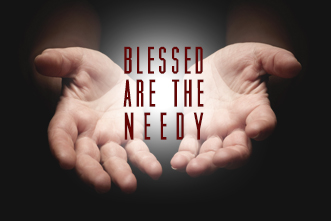The Story of Catholic Philadelphia

Translate This Page

History Making Productions, the Philadelphia-based EMMY award winning documentary film production company behind Philadelphia: The Great Experiment, has produced a new documentary film, Urban Trinity: The Story of Catholic Philadelphia. The film is presented in three 26-minute chapters.
Urban Trinity: The Story of Catholic Philadelphia will broadcast exclusively on 6abc/WPVI-TV. Parts one and two aired back to back last night, September 22. Part three will air on Sunday, September 27th at Midnight, after Pope Francis’ departure from Philadelphia.
Additionally, the film will be premiered as an official part of the calendar of events and included in the World Meeting of Families – Philadelphia 2015, film festival.
Urban Trinity will be available online beginning on September 28th at
www.urbantrinityfilm.com and www.historyofphilly.com.
Urban Trinity: The Story of Catholic Philadelphia is a 78-minute documentary film that portrays the history of successive waves of immigrants to Philadelphia whose common bond was their Catholicism and who came to the city seeking religious freedom, personal survival and a better life. Despite its reputation as the place of William Penn’s "holy experiment", enabling all forms of religious practice, Philadelphia, like America itself, imposed significant obstacles in the quest of Catholic immigrants for acceptance, opportunity and dignity.
From the outset, faithful Catholics strove to preserve the distinct ethnic and cultural traditions that they carried with them while simultaneously seeking to create a unified church in a mission based nation. But internal struggles within the Church often paled in comparison to conflicts with those who thought Catholicism foreign - even a threat - to the democratic American experiment. In the 1830s and 1840s, discrimination and violence erupted, as the city was flooded with Irish Catholic immigrants, fleeing the famine-induced starvation and persecution experienced in Ireland at the hands of a hostile Protestant British government. A fierce mid-century anti-Catholicism led to the first large-scale urban violence in American history, during which Catholic churches, convents, and homes were destroyed and dozens of Catholics (and Protestants) were murdered and maimed. Yet, within the ensuing decade, Catholics would become the largest religious population in the city, and a cradle-to-grave network of institutions - schools, colleges, hospitals, benevolent societies, craft unions, even banks – were established to protect and serve the flock. Following the pattern established by German Catholics, Irish, Italians, Poles, African-Americans, and others built national churches.
By the end of the 19th century, Philadelphia was not just a city of neighborhoods, but had become a city of parishes, with a Catholic institutional and cultural network - a sacred cocoon - within the growing urban metropolis.
At the dawn of the 20th century, Philadelphia’s first Cardinal and Pennsylvania native son, Dennis Joseph Dougherty – often known as "God’s bricklayer" – had become the city’s most powerful figure. During his 33-year reign as Bishop of Philadelphia, the Catholic landscape consisted of nearly five hundred parishes, two thousand priests and seven thousand nuns serving more than 1.2 million Philadelphia Catholics. A confident Catholicism flourished as a once-feared demographic of ethnic communities assumed leading roles in every aspect of the city’s economic, political, civic and religious life. Real estate advertisements listed homes for sale by parish. Even non-Catholics often geographically defined themselves by parish. This was the apex of Catholic predominance. But as America emerged from World War II and deindustrialization and an accelerating suburban boom yielded economic and social stresses in the city, the pews of those same parishes gradually emptied, leaving traditional row-house life behind. By the century’s end, the closing and merger of many schools and churches, and the scandal and cover-up of priest sexual abuse of children, had shaken the trust of the faithful.
And yet now, at the beginning of Philadelphia’s fifth century, Catholics - both immigrants and native born - continue to come to the city, seeking what so many before them aspired to, and imbibing their cultural traditions and forms of devotionalism to the revitalization parish life. Catholics now sense that this changing landscape of the urban church will produce creative new models to maintain the faith - not just today, but forevermore.